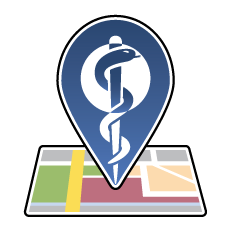Social: #ContainsCourage #FoodAllergy #FARE
Twitter: @FoodAllergy
Facebook: @FoodAllergyFARE
Website: https://www.foodallergy.org/life-with-food-allergies
Food allergy is a serious and potentially life-threatening medical condition affecting 32 million Americans. One in every 13 children has a food allergy—that’s about 2 in every U.S. classroom. And every 3 minutes, a food allergy reaction sends someone to the emergency room.
Food allergy is among the diseases considered to be part of the Atopic March. Also known as the Allergic March, this term refers to the progression of allergic diseases in a person’s life: eczema, food allergy, allergic rhinitis and asthma. Not everyone will follow this progression, or experience every condition.
What Causes a Food Allergy?
The job of the body’s immune system is to identify and destroy germs (such as bacteria or viruses) that make you sick. A food allergy happens when your immune system overreacts to a harmless food protein—an allergen.
In the U.S., the eight most common food allergens are milk, egg, peanut, tree nuts, soy, wheat, fish and shellfish.
Family history appears to play a role in whether someone develops a food allergy. If you have other kinds of allergic reactions, like eczema or hay fever, you have a greater risk of food allergy. This is also true of asthma.
Food allergies are not the same as food intolerances, and food allergy symptoms overlap with symptoms of other medical conditions. It is therefore important to have your food allergy confirmed by an appropriate evaluation with an allergist.
Food Allergies Are Serious
Food allergy may occur in response to any food, and some people are allergic to more than one food. Food allergies may start in childhood or as an adult.
All food allergies have one thing in common: They are potentially serious. Always take food allergies—and the people who live with them—seriously.
Food allergy reactions can vary unpredictably from mild to severe. Mild food allergy reactions may involve only a few hives or minor abdominal pain, though some food allergy reactions progress to severe anaphylaxis with low blood pressure and loss of consciousness.
Food Allergies Have No Cure
Currently, there is no cure for food allergies. The only way to prevent reactions is to completely avoid the food you are allergic to.
But research is making a difference. Every day, scientists are working toward a better understanding of food allergies—so we can find life-saving treatments.
FARE is proud to be the world’s largest private source of funding for food allergy research.
We Are Here to Help
FARE is dedicated to speaking up for all Americans with food allergies, including those at risk for life-threatening anaphylaxis. Our mission is to improve the quality of life and the health of individuals with food allergies, and to provide them hope through the promise of new treatments.
Families come to us for information when a loved one is first diagnosed. Healthcare providers come to us for patient education materials and information about clinical trials. Scientists come to us seeking funding for their own food allergy studies. Teachers, restaurant workers and other members of the community come to us to learn how they can make the world safer for people with food allergies.
Food Allergy Research & Education
7925 Jones Branch Dr., Suite 1100
McLean, VA 22102
(800) 929-4040
(703) 691-3179
(703) 691-2713 Fax
ngregory@foodallergy.org
www.foodallergy.org/life-with-food-allergies
Materials available
Contact: Nancy Gregory
Source: 2019 National Health Observances, National Health Information Center, Office of Disease Prevention and Health Promotion, U.S. Department of Health and Human Services, Washington, DC.

